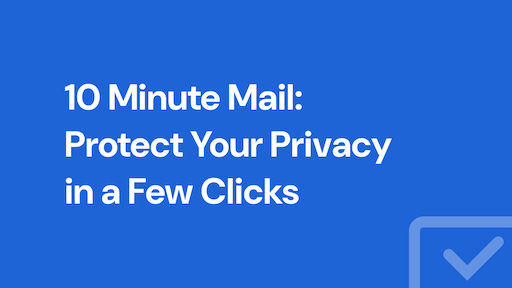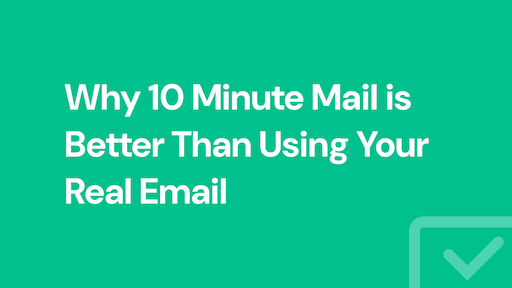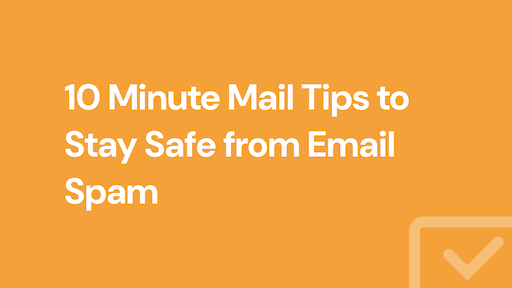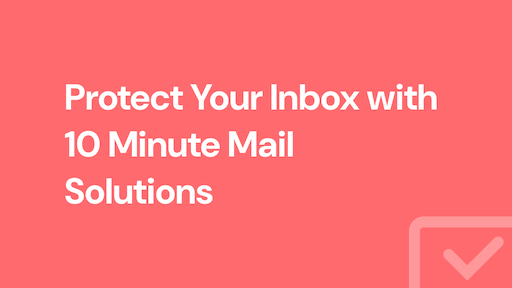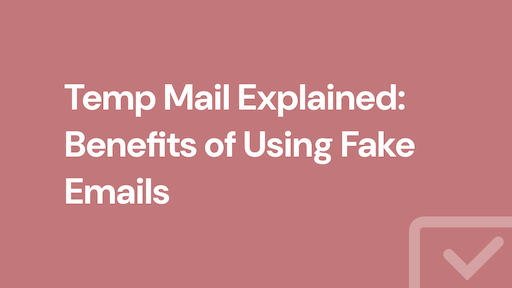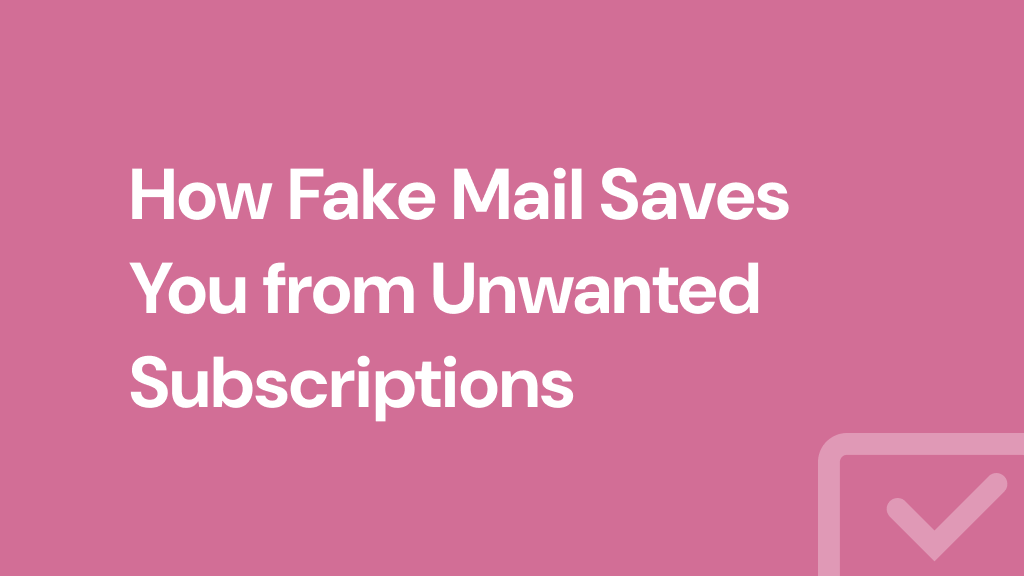
How Fake Mail Saves You from Unwanted Subscriptions
With the internet at our fingertips basically all the time, it's crucial to have control over what information about you can be found online. Signing up for a new service online, registering for a newsletter, or browsing a new website can lead you down the rabbit hole of unwanted email subscriptions. Fake mail can save you from this hassle. Discover how fake mail stops unsubscribed emails and provides easy access and privacy below.
What Is Fake Mail?
Fake mail is a temporary email address that is created to sign up for services without registering your real email. It's an advantageous service when an email is required, and a personal email should not be given. Fake mail addresses are temporary (usually they're only valid for about ten minutes) and facilitate easy, anonymous access without bogging down someone's personal email with subscriptions and unsolicited correspondence.
With new services and newsletters emerging daily on the web, subscriptions you never asked for are becoming standard. It's easier than ever to try and join a new service only to have, moments later, a newsletter subscription to a service you never wanted or meant to enter. Such subscriptions litter your inbox—and, even worse, can lead to spam, phishing, and even malware.
Fake mail prevents this from occurring. It helps maintain your main email address clear of exposure to countless other sites in need of subscription confirmation by creating a fictitious email. Even if that fictitious email gets placed on a spam list, your primary inbox stays clean.
Fake mail is effective and simple. A website like 10minutemail.com creates appointments for a fictitious email that lasts ten minutes. Within those ten minutes, a person can either need it to sign up for services or get an activation email. Once the ten minutes is up, the email deactivates, and all correspondence connected to that new address is erased.
No need to worry about canceling newsletters or marketing emails after you've signed up for the service. Fake mail also ensures that your identity and your other email (the real one) remain private.
The Benefits of Fake Mail to Prevent Subscriptions
1. Less Spam and Unsolicited Email
Spam is created mainly by services and sites for which you've signed up and don't want to receive subsequent emails. By creating a fake mail address, you can access certain subscriptions without jeopardizing your real, primary email and creating unnecessary future complications.
2. Protecting Your Privacy
Whenever you create an account for a new service, especially one that offers free trials, the request for your email is abundant. However, many of these services will send you deals via email—some more than you'd like—creating a fake mail account protects your privacy and prevents your email from getting oversaturated.
3. Easier Email Management
It's frustrating spending valuable time weeding through unnecessary email from subscriptions that have nothing to do with your work or personal daily happenings. A fake email address allows you to keep everything important in your email and filter out some essential, unnecessary communication. If you absolutely have to register for something and don't want the hassle of anything in the future, a disposable email address is the solution.
4. Avoiding Security Breaches
While many legitimate companies exist, an equal number of subscription-based companies will sell/share your email with other companies. This is even more likely with unsolicited offers. You may end up on someone's sales roster or part of a phishing scheme because your email fell into the wrong hands. By using fake mail, your personal email address is never out there for the picking, which reduces your chances for unintended interests and accidental phishing for malware.
Signing up for fake mail is easy as 1-2-3, and many sites—10minutemail.com, for example—allow you to use it without creating an account. In a world where time is of the essence, fake mail is the ideal quick fix to avoid spam; once you get the confirmation, you can let the fake email address die out and not worry about an excessive number of email subscriptions flooding your real account down the line.
How to Use Fake Mail Responsibly
Of course, while using fake mail is a handy service, you'll want to make sure you use it correctly. Here are some suggestions for responsibly using fake mail in your everyday life:
- Use Reputable Fake Mail Sites: Not every fake mail site is legitimate. Make sure you use reputable ones, like 10minutemail.com, that are simple, safe, and easy to use. There should be a clear expiration time and a guarantee that nothing personal is being gathered.
- Don't Use Fake Mail for Sensitive Information: But fake mail shouldn't be used for anything sensitive—banking, shopping, or messaging where safety and security actually count—for these services, and people will need the real email address to gain access to such features.
- Understand What's Restricted: Some sites won't let you in if they think you're using a disposable email. If it's a credentialed service, it might not let you register using a fake mail account. Always check the requirements.
Fake Mail Prevents Email Overload
More and more people suffer from email overload these days. From marketing and notification emails to sign-ups, it's hard to maintain a clean, organized inbox. Fake mail gives people better access to overloaded services without jeopardizing their personal email.
Temporary mail offers individuals the chance to sign up for certain things or gain access to information without the proviso of a permanent connection. For the casual observer or someone who wants to try a new product, site, or app, they can register with a temp and avoid any further communication down the line, never needing to see it again in their already cluttered inboxes.
Conclusion
Ultimately, temp mail is a savvy and effective way to avoid unwanted sign-ups, spam, and unwanted malicious intent penetrating a person's real mail. Temporary mail allows individuals to access the potential that mail can provide them and email without concern for future signups and overstuffed email folders, instead allowing for privacy and decluttered email boxes.
Temp mail equals reduced stress when accessing email, privacy protection, and reduced unsolicited attempts at reaching out after an email identity is exposed.
Use temp mail when signing up for newsletters, trying to test new apps, and exploring new sites.
Use temp mail as a quick and easy way to manage your digital existence to keep your email in check and free from excess.

